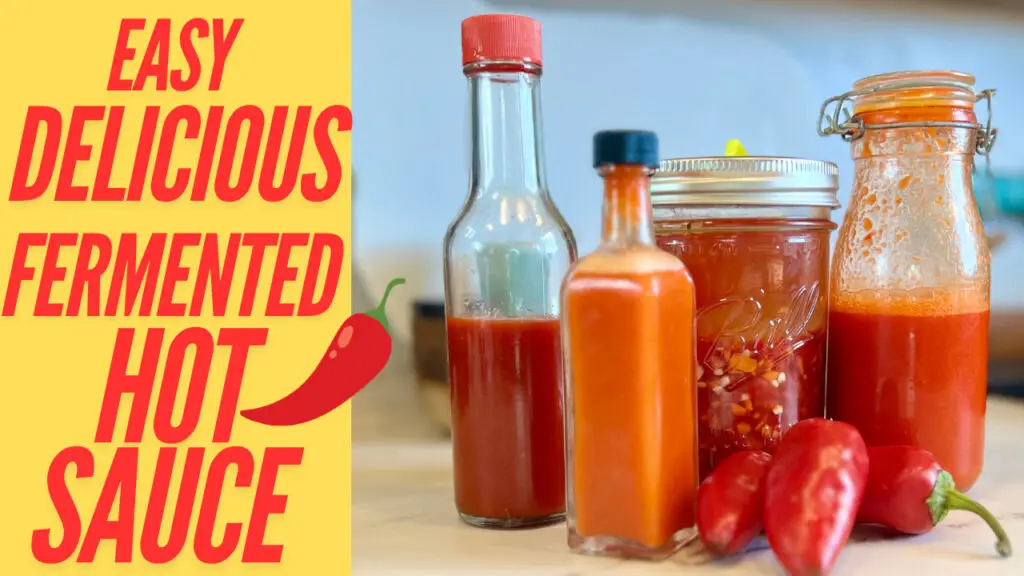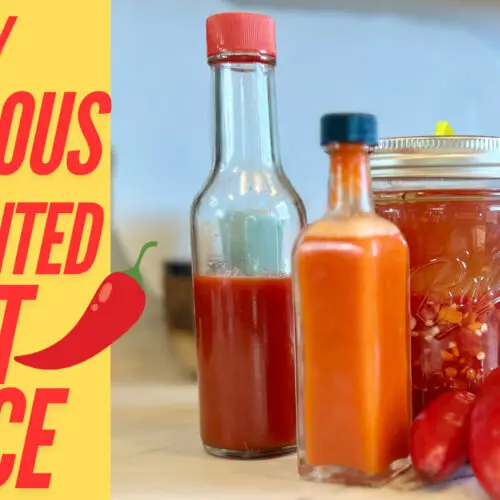First, let’s start with the basics – what exactly is fermented hot sauce? Simply put, it’s a hot sauce that has been made through the process of fermentation. This involves adding salt to chopped peppers and letting them sit in a jar for a period of time. During this process, the naturally occurring bacteria on the peppers break down the sugars and create lactic acid, giving the sauce a tangy and complex flavor. The longer the sauce ferments, the more developed the flavors become.
So why should you choose fermented hot sauce over regular hot sauce? The answer lies in its unique taste. While many hot sauces have a one-dimensional spicy heat, the fermentation process adds layers of flavor, making it more complex and interesting. It also has a smoothness and richness that you won’t find in other hot sauces. Plus, fermented hot sauce is often made with natural and organic ingredients, making it a healthier choice.
Another great thing about fermented hot sauce is its versatility. It can be used in a variety of dishes, adding a kick of heat and flavor. It’s not just limited to traditional hot sauce applications like adding it to tacos or wings, but it can also be used as a marinade, salad dressing, or even in cocktails. The possibilities are endless!
But the benefits of fermented hot sauce don’t stop there. This type of hot sauce is also packed with healthy probiotics. Fermentation introduces healthy bacteria into the sauce, which promotes good gut health and can boost your immune system. Not only are you getting a delicious hot sauce, but you’re also reaping some health benefits.
Fermented Hot Sauce
Ingredients
- 8 oz Chili peppers (both hot chili peppers and milder sweet peppers can be used), Sliced (seeds removed for a milder flavor) Fresno, jalapeño, habanero, banana, and pepper you like!
- 1 cup Filtered water
- 1/2 Carrot, peeled and cut into small chunks you can use apple, peach, mango
- 1-2 cloves garlic
- 1/2 tbsp Honey you can use brown sugar, or molasses
Instructions
- Dissolve the salt in the water
- Wash peppers, and wearing gloves, slice peppers, removing seeds if desired.
- Chop onion, and garlic. Peel the carrot and slice thin.
- Layer ingredients in a clean, glass jar, gently packing them in as you add and leaving about 1" at the top of the jar.
- Pour the brine over the pepper mixture, tapping the jar and pushing down on the mixture to remove any air bubbles. Make sure there is enough brine to cover the top of the mixture.
- Place a fermentation weight on top of the mixture to keep everything submerged below the saltwater brine.
- Put an airlock lid on top of the jar and place the jar in a bowl or other shallow dish incase the ferment bubbles over. Place it in a cool place out of direct sunlight for 7-14 days.
- I prefer 14 days, but if you get busy and it goes longer it will be fine.
- Check for signs of fermentation after 3-4 days. You should see a cloudy brine and some bubbling action going on when the jar is moved or tapped. If it isn't, don't fret, just be patient and check again.
- When ready, strain the vegetables, saving the brine.
- Place the vegetables and 1/2 cup of the brine along with the honey into a blender and blend. Add more brine as necessary to make it as thin as desired.
- You can add a little apple cider vinegar if you like. It adds a nice taste and helps stop the fermentation. If you do this, you can keep it on the countertop.
- Pour the finished hot sauce into a bottle and store it in the refrigerator where it will keep for at least one year. Make sure to keep it refrigerated and give it a week or two to mellow the heat level.
- Shake before using!
- This is living food, storing it unrefrigerated and tightly covered will result in the hot sauce exploding. It can be given as a gift and kept at room temperature for short periods of time, but be sure the recipient knows to refrigerate it.


